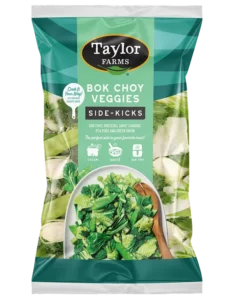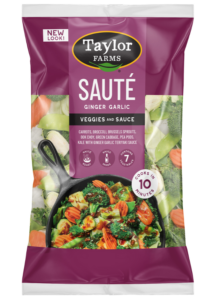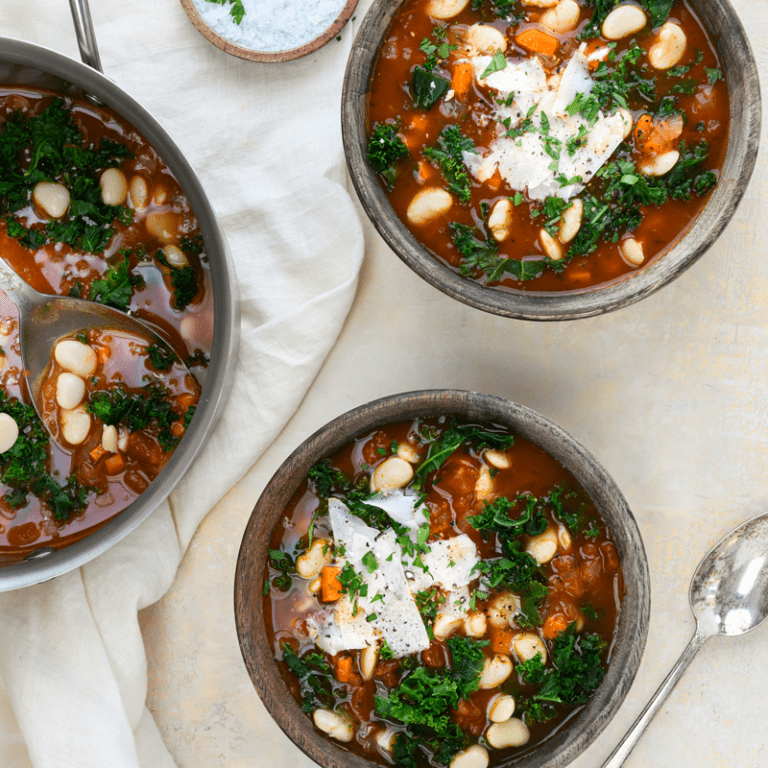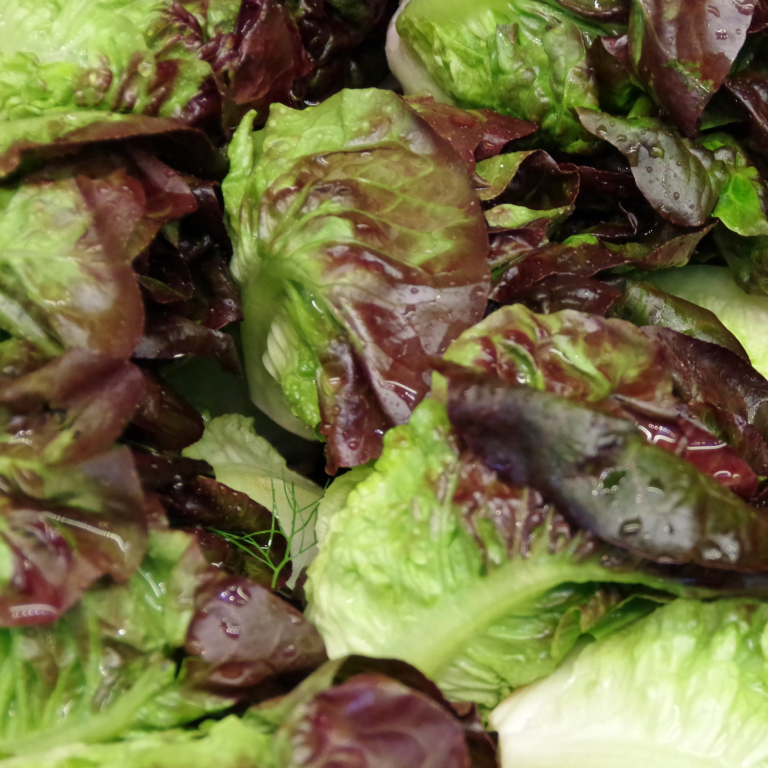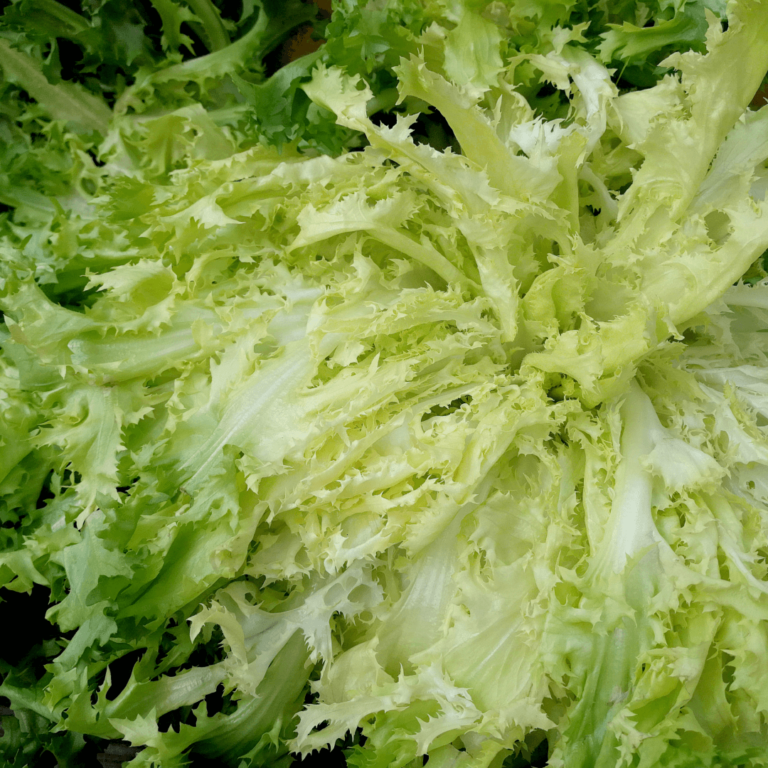Bok Choy at a Glance

Scientific Name: Brassica rapa subsp. chinensis
Family: Brassicaceae
In Season: Fall through early spring
Varieties: Shanghai, Baby Bok Choy, Choy Sum
Great for: Stir-fries, soups, salads, and steamed or grilled dishes due to its crisp texture and mild, versatile flavor.
Bok Choy Nutrition
9 Calories
1 gram protein
Vitamins A, C, and K
Common Questions about Bok Choy
Raw bok choy offers a refreshing, crisp bite with a mild, slightly peppery flavor. The leaves are tender and carry a hint of mustard-like zest, while the stalks provide a juicy, crunchy texture. Its raw state showcases a delicate earthiness that pairs well with various dressings or dips, making it a delightful addition to salads or as a crunchy snack on its own.
When cooked, bok choy maintains its crunch but does soften slightly. The flavor becomes milder and sweeter, losing some of its peppery edge. Cooking, whether through stir-frying, steaming, or sautéing, enhances its natural sweetness and unlocks subtle nutty undertones. The leaves wilt gracefully, absorbing flavors from spices, broths, or sauces, creating a pleasing balance between the vegetable and any added seasonings.
Growing bok choy
When growing bok choy, it’s generally ready to harvest when the leaves are large enough to be usable, usually around 6-8 inches tall. The leaves should be deep green and crisp without any yellowing or wilting, indicating maturity. The stems should be firm yet tender.
Purchased bok choy
When purchasing fresh bok choy, look for vibrant, crisp leaves without any wilting, yellowing, or browning. The stalks should be firm and juicy. Avoid any signs of mold, sliminess, or strong odors, as these could indicate spoilage. Typically, smaller bok choy tends to be more tender, while larger ones may have a slightly stronger flavor.
Yes, you can freeze bok choy, but it’s essential to blanch it first for optimal results. Blanching involves briefly immersing the vegetable in boiling water, then quickly cooling it in ice water to stop the cooking process before freezing.
Properly blanching and freezing bok choy can help preserve its texture and flavor for several months. However, frozen bok choy might become slightly softer after thawing, making it better suited for cooking from fresh.
Bok choy has a rich history rooted in China, where it’s been cultivated for centuries. Its popularity extends throughout East Asia, prominently in countries like Japan and Korea, ingrained as a culinary cornerstone. While its origins lie in Asia, it has found fertile ground in North America, mainly across the United States and Canada. Beyond these regions, bok choy is also grown in select parts of Europe and other Asian countries.

How to cook & serve bok choy
Stir-Frying: Stir-frying retains bok choy’s crunch. Combine with garlic, ginger, and soy sauce for an Asian-inspired dish, or toss with other veggies and protein.
Steaming: Serve steamed bok choy with a drizzle of sesame oil and a sprinkle of sesame seeds for a simple yet satisfying side dish.
Sautéing: Sautéing in olive oil or butter allows for a slightly caramelized flavor. Add chili flakes or a splash of lemon juice for a tangy kick.
Roasting: Roasting at high heat caramelizes the edges, giving it a deeper flavor. Pair roasted bok choy with a dash of balsamic glaze or a sprinkle of parmesan for a
Bok choy pairs well with proteins like chicken, fish, or tofu. In Asian cuisine, it’s a staple in noodle dishes, soups, and stir-fries, adding texture and a hint of sweetness. Incorporate it into pasta dishes or grain bowls for a nutrient boost or use it as a versatile addition to Mediterranean-inspired creations or salads.

